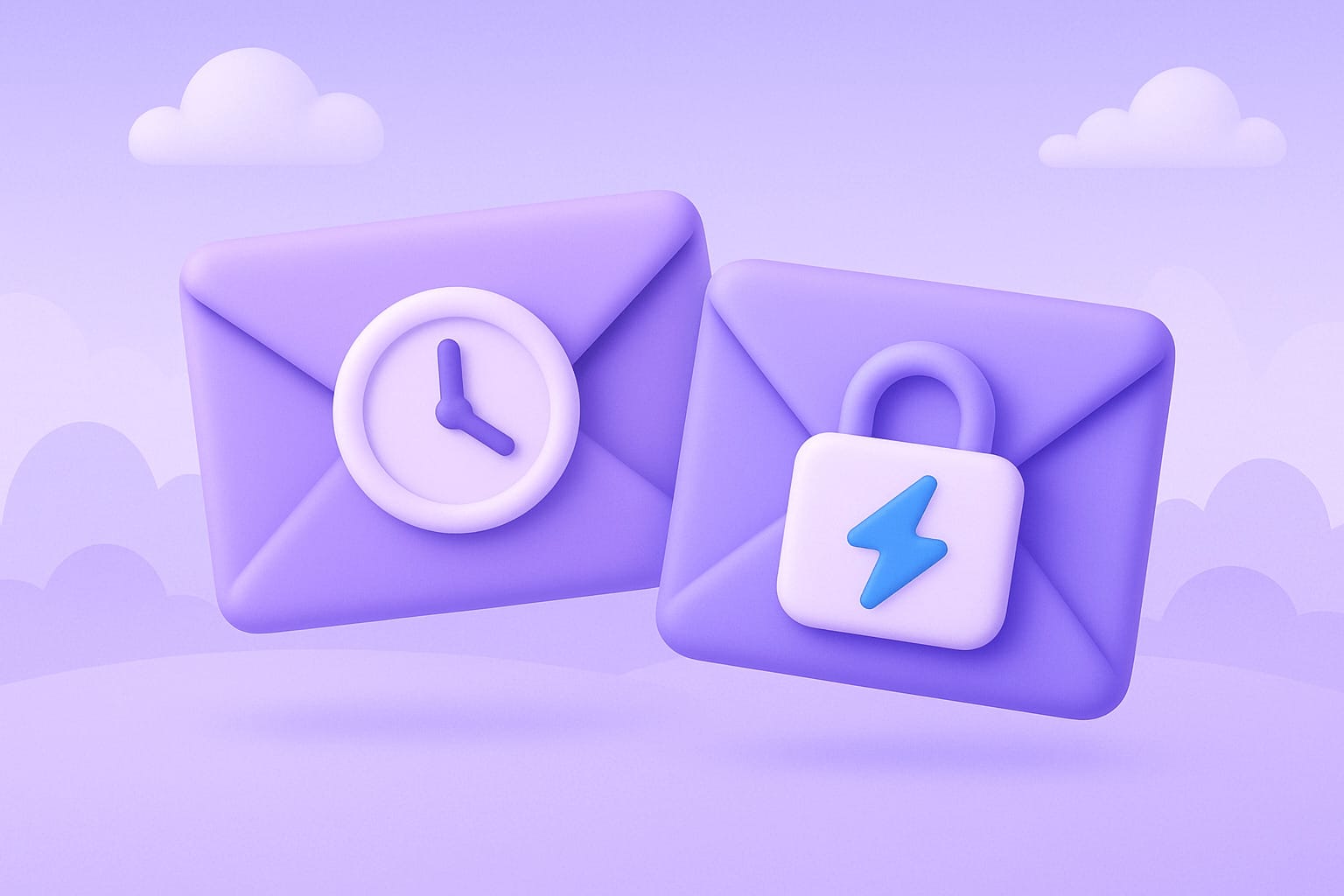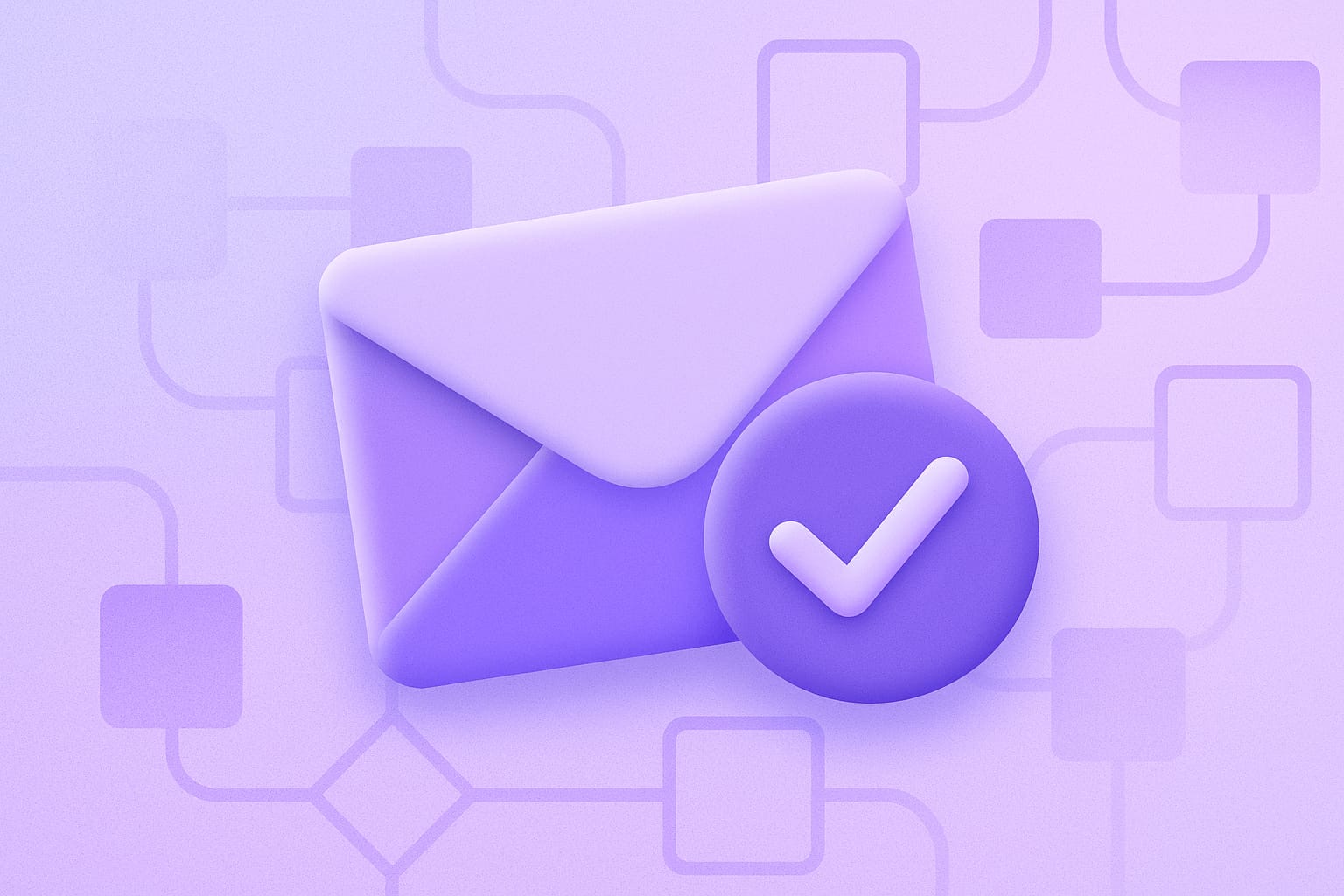Big news from the temp-mail.io team! We've launched Alias Email – a service that picks up where temporary email leaves off. After watching millions of people use our disposable email service, we noticed something: lots of you needed email protection that stuck around longer than a few hours or days.
Table of Contents
- How These Two Actually Work
- Why Email Aliases Actually Matter
- When Temp Mail Still Beats Everything
- Real-World Usage Scenarios
- The Technical Stuff That Actually Matters
- Privacy Isn't Just About Hiding
- Managing Multiple Digital Lives
- The Account Recovery Problem
- Cost and Convenience Factors
- Making the Right Choice for Each Situation
- Getting Started
Here's the deal. Temp mail works great when you want to grab something quick from a sketchy website and disappear. But what happens when you actually want to keep receiving emails from that service? Or when you need to log back into an account months later? That's where email aliases come in.
How These Two Actually Work
Let's clear this up because people mix these up all the time.
Temporary email gives you a random address like xyz123@woohoo.com that deletes itself after a set time. You can't send emails from it, you can't control when it dies, and once it's gone, it's gone forever. Perfect for downloading that PDF you'll never read or signing up for something you'll forget about in 20 minutes.
Why do domains become unavailable?
Email aliases work completely differently. You get an address like shopping@email.com that forwards everything to your real inbox. The alias stays alive as long as you want it to. You can reply from it. You can turn it off if it starts getting spam. And yes, you can turn it back on whenever you want.
Why Email Aliases Actually Matter
Remember that online store you signed up for six months ago? The one where you used a temp mail because you weren't sure about them? Well, now they're having a 50% off sale and guess what – you'll never know because that email address died.
Email aliases solve this problem without creating new ones. When shopping@email.com gets an email, it shows up in your regular inbox. If that alias starts getting junk mail, you delete it and create a new one. Your real email stays hidden the whole time.
The privacy protection is just as good as temporary email, but you don't lose access to accounts you might actually want later.
When Temp Mail Still Beats Everything
Don't get us wrong – temporary email isn't going anywhere. There are plenty of times when you want maximum paranoia levels.
- Downloading something from a website that looks like it was built in 1999? Temporary email.
- Testing whether a form actually works? Temporary email.
- Getting a discount code from a company that definitely sells email lists? Temporary email!
The beauty of disposable addresses is that they require zero commitment and zero trust. You don't even need to remember they existed. Sometimes that's exactly what you want.
Real-World Usage Scenarios
Here's how people actually use these tools in practice:
Sarah the Freelancer uses temp mail for potential client inquiries on freelance platforms. If someone seems legitimate after the first email exchange, she switches to an alias for ongoing communication. If they're time-wasters or lowballers, the temporary address disappears and takes the problem with it.
Mike the Deal Hunter has aliases set up for different types of shopping: electronics@some.email for gadget deals, clothes@some.email for fashion sales. When one starts getting too much spam, he switches to electronics2@some.email and keeps hunting for bargains.
Lisa the Developer uses temp mail for testing user registration flows and aliases for accounts she needs to keep accessing during longer development cycles.
The Technical Stuff That Actually Matters
Most email providers already let you create aliases, but they're usually tied to your real domain name. So if your email is john@gmail.com, your alias might be john+shopping@gmail.com (using Gmail plus trick). Anyone can see that both addresses belong to the same person.
Alias Email use completely different domains. Your real email could be anything, and your alias looks like randomword@some.email. There's no obvious connection between them.
Also, Gmail-style aliases don't work everywhere. Some websites strip out the "+shopping" part automatically. Purpose-built alias services don't have this problem.
Privacy Isn't Just About Hiding
Email aliases do more than just hide your real address. They help you figure out who's selling your information.
Set up different aliases for different services. When netflix@some.email starts getting emails about crypto trading, you know Netflix either got hacked or sold your data. You can't get that kind of intelligence from temp mail because the addresses disappear before the spam arrives.
How to use Netflix with temp mail
Managing Multiple Digital Lives
People aren't just one thing online anymore. You might be a professional consultant, a hobbyist photographer, and a parent looking for kids' activities. Each of these personas needs different types of emails, but you don't want them all mixed together in one inbox.
Email aliases let you compartmentalize without maintaining separate email accounts. consulting@some.email for work inquiries, photos@some.email for camera gear newsletters, kids@some.email for school notifications. Everything ends up in your main inbox, but sorted by purpose.
Temporary email can't do this because you can't control the addresses you get or make them memorable.
The Account Recovery Problem
This is where temp mail can really burn you. Password reset emails, security notifications, account verification messages – these often come hours or days after you sign up. If your temporary address expired, you're locked out permanently.
We've heard a lot of users who lost access to their accounts because they used temp mail for the initial signup. Cryptocurrency exchanges, investment platforms, online courses – services where account access actually matters.
Aliases eliminate this risk. Your finance@some.email address will be there waiting when you need to reset your password three months from now.
Cost and Convenience Factors
Temp mail services are usually free because they don't store anything long-term. Email aliases also free, but offer premium features that cost money because they provide permanent forwarding.
But think about the actual cost of losing access to accounts. How much is it worth to guarantee you can always recover your accounts? Most people find that a few dollars per month is a bargain compared to the headache of locked accounts.
Plus, alias services often include features that save time: automatic filtering, custom domains for professional use, mobile apps for managing aliases on the go.
The Psychology of Inbox Zero (and How Aliases Support It)
Making the Right Choice for Each Situation
The decision isn't really "temp mail vs aliases". It's "temp mail vs aliases for this specific task right now".
Quick rule of thumb: If you might want to receive emails from this service more than once, use an alias. If you're confident this is a one-time thing, use temporary email.
When in doubt, err on the side of aliases. You can always delete them later, but you can't resurrect a temporary email that's already gone.
Getting Started
Ready to try both approaches? Keep using temp-mail.io for those sketchy one-time signups and quick downloads. Head over to Alias Email when you need something more permanent.
The combination gives you complete email privacy coverage. Maximum anonymity when you want it, reliable access when you need it.
Your inbox will thank you, and so will your future self when you're not locked out of accounts you actually care about.





